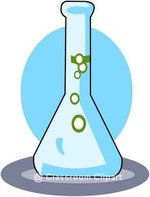Fermium
|
|
| |||||||||||||||||||||||||||||||
| Known properties | |||||||||||||||||||||||||||||||
|---|---|---|---|---|---|---|---|---|---|---|---|---|---|---|---|---|---|---|---|---|---|---|---|---|---|---|---|---|---|---|---|
| Name, Symbol, Number | Fermium, Fm, 100 | ||||||||||||||||||||||||||||||
| Chemical series | Actinides | ||||||||||||||||||||||||||||||
| Period, Block | 7, f | ||||||||||||||||||||||||||||||
| Appearance | unknown; probably metallic, silvery white or gray | ||||||||||||||||||||||||||||||
| Atomic weight | [257] amu | ||||||||||||||||||||||||||||||
| Electron configuration | [Rn]5f12 7s2 | ||||||||||||||||||||||||||||||
| e-'s per energy level | 2, 8, 18, 32, 30, 8, 2 | ||||||||||||||||||||||||||||||
| State of matter | Presumably a solid | ||||||||||||||||||||||||||||||
| Most stable isotopes | |||||||||||||||||||||||||||||||
| |||||||||||||||||||||||||||||||
Fermium is a synthetic element in the periodic table that has the symbol Fm and atomic number 100. A highly radioactive metallic transuranic element of the actinide series, fermium is made by bombarding plutonium with neutrons and is named after nuclear physicist Enrico Fermi.
| Contents [hide] |
Notable characteristics
Only small amounts of fermium have ever been produced or isolated. Thus relatively little is known about its chemical properties. Only the (III) oxidation state of the element appears to exist in aqueous solution. Fermium-254 and heavier isotopes can be synthesized by intense neutron bombardment of lighter elements (especially uranium and plutonium). During this, successive neutron captures mixed with beta decays build the fermium isotope. The intense neutron bombardment conditions needed to create fermium exist in thermonuclear explosions and can be replicated in the laboratory (such as in the High Flux Isotope Reactor at Oak Ridge National Laboratory). The synthesis of element 102 (nobelium) was confirmed when fermium-250 was chemically identified. There are no known uses of fermium outside of basic research. Fermium is the eighth transuranic element.
History
Fermium (after Enrico Fermi) was first discovered by a team led by Albert Ghiorso in 1952. The team found fermium-255 in the debris of the first hydrogen bomb explosion (see Operation Ivy). That isotope was created when uranium-238 combined with 17 neutrons in the intense temperature and pressure of the explosion (eight beta decays also occurred to create the element). The work was overseen by the University of California Radiation Laboratory, Argonne National Laboratory, and Los Alamos Scientific Laboratory.
All these findings were kept secret until 1955 due to Cold War tensions, however. In late 1953 and early 1954 a team from the Nobel Institute of Physics in Stockholm bombarded a uranium-238 target with oxygen-16 ions, producing an alpha-emitter with an atomic weight of ~250 and with 100 protons (in other words, element 100-250). The Nobel team did not claim discovery but the isotope they produced was later positively identified as fermium-250.
Isotopes
17 radioisotopes of fermium have been characterized, with the most stable being Fm-257 with a half-life of 100.5 days, Fm-253 with a half-life of 3 days, Fm-252 with a half-life of 25.39 hours, and Fm-255 with a half-life of 20.07 hours. All of the remaining radioactive isotopes have half-lifes that are less than 5.4 hours, and the majority of these have half lifes that are less than 3 minutes. This element also has 1 meta state, Fm-250m (t? 1.8 seconds). The isotopes of fermium range in atomic weight from 242.073 amu (Fm-242) to 259.101 amu (Fm-259).
References
- Los Alamos National Laboratory - Fermium (http://periodic.lanl.gov/elements/100.html)
- Guide to the Elements - Revised Edition, Albert Stwertka, (Oxford University Press; 1998) ISBN 0-19-508083-1
- It's Elemental -Fermium (http://education.jlab.org/itselemental/ele100.html)
External links
- WebElements.com - Fermium (http://www.webelements.com/webelements/elements/text/Fm/index.html)
- EnvironmentalChemistry.com - Fermium (http://environmentalchemistry.com/yogi/periodic/Fm.html)


